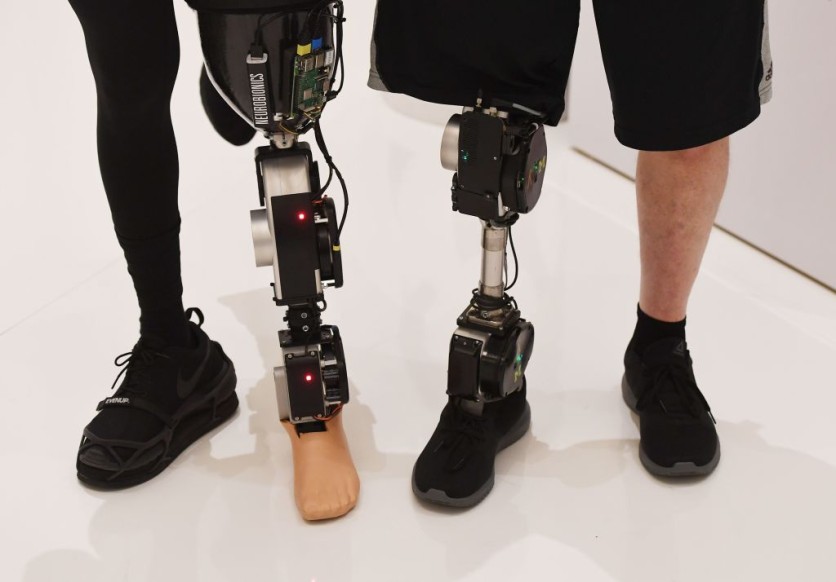A newly developed Robotic Prosthetic Leg by North Carolina State University and the University of North Carolina improves amputees' movement to the point that it returns the subject to instinctively use natural movements and muscles similar to abled individuals, as reported by Interesting Engineering.
The press release for the study states that the newest development, developed using a previous study, uses electromyographic (EMG) sensors that allow amputees, specifically those with below-the-knee amputation on one leg, to use the invention with greater ease as well as "naturally and intuitively."

Specifically, the report states that with the help of the EMG sensors placed on the amputees' calf, the subjects could tell the robotic prosthetic ankle's artificial muscles which to contract and to what extent by sensing which muscles on the calf were flexed.
Co-author of the Study, Helen Huang, stated the study discovered this clinically significant finding by focusing on a "surprisingly complicated" concept of "postural stability."
Aaron Fleming, co-author of the study, praised the invention's versatility by stating that the "study participants were significantly more stable when using the robotic prototype," adding that participants were "less likely to stumble or fall."
New vs. Current Amputee Postural Stability
Huang explained why the study's prototype allowed for a more "natural" movement by stating that able-bodied individuals' postural stability often begins at the ankle. People who have lost a lower limb typically have to make up for their loss of ankle control. The study concluded that an EMG-responsive robotic ankle enables users to revert to their natural response to maintain stability.
Through the tests, the researchers concluded that their findings allowed amputees to possibly no longer compensate for the absence of one's limbs by strengthening other intact joints. Something that conventional therapeutic interventions have done. Instead, the study's prototype can be a substitute and "actively assist postural stability."
The study tested ten overall participants, five amputee participants, and five able-bodied participants, all middle-aged males. All recruited lower-limb amputees had to wear their prostheses at least 12 hours a day as a limitation set by the study. Before any tests were done, the participants reportedly were allowed to practice with the prototype to ensure familiarity.
Read Also : High School Students Help their Differently Abled Classmate by 3D-Printing a Robotic Hand
Data Gathering
Results are drawn from a variety of tasks. First were the amputee participants being examined "using their daily, [non-EMG-enabled prosthetic] and, on a separate day, using the dEMG-controlled prosthetic ankle," while able-bodied participants were examined just for a day.
Tasks done to understand the prosthesis's postural stability for both amputees and able-bodied participants were "expected perturbations" that test participants through "applied disturbances to participants via the arms" through a push and pull motion.
The next test was a "voluntary postural sway task" that saw the participants swaying "as far forward and backward as possible while keeping their feet flat on the ground for 25 consecutive sways."
Lastly, full-body motion capture and an instrumented split-belt treadmill tracked the participants' joint kinematics (motion between two joints) and kinetics (the force needed to change motion).
Huang stated that larger tests for the study are underway to " demonstrate the effects of the technology and identify which individuals may benefit most."
The study is 'Neural Prosthesis Control Restores Near-Normative Neuromechanics in Standing Postural Control.'
Related Article : This 3D-Printed Soft Robotic Gripper Can Operate Without Electronics - How Does It Work?





